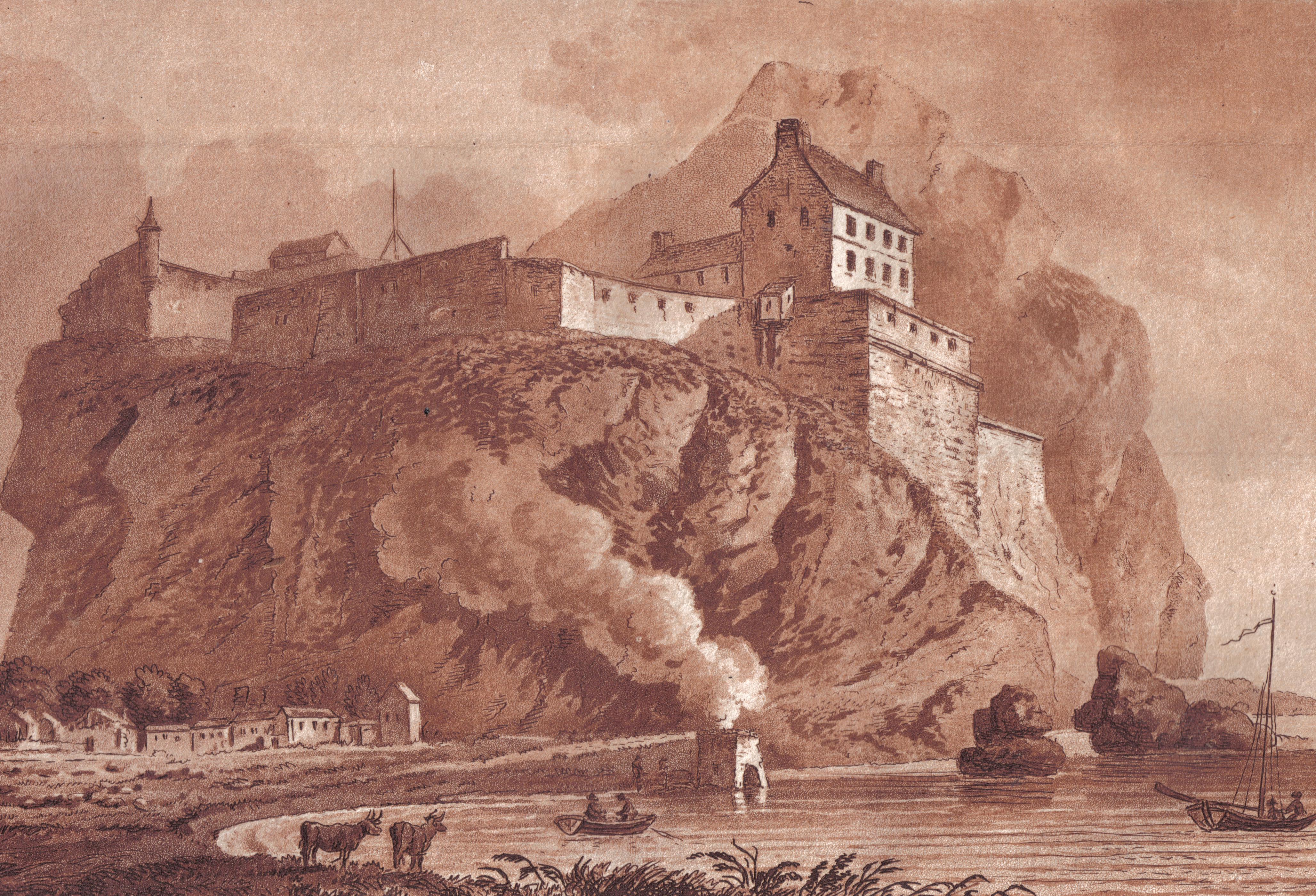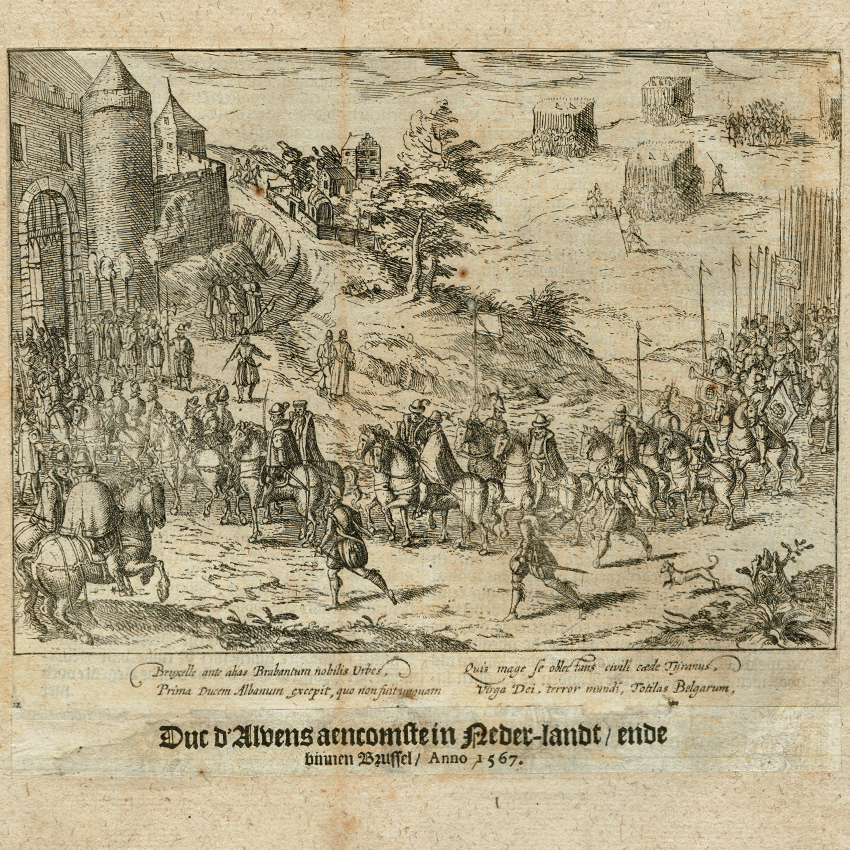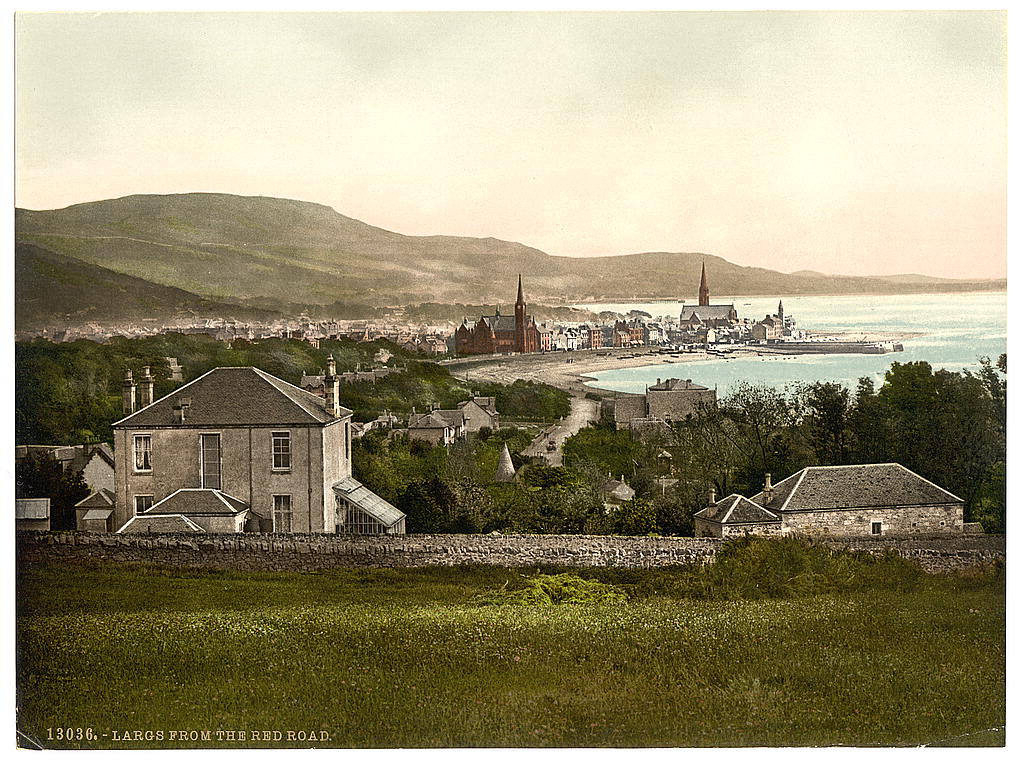|
James Somerville, 6th Lord Somerville
James Somerville, 6th Lord Somerville, (c.1518-1569) was a Lord of the Parliament of Scotland James was the son of Hugh Somerville, 5th Lord Somerville and Jonet Maitland. James and Mary of Guise James Somerville wrote to Queen Regent of Scotland, Mary of Guise, from Cowthally Castle on 22 March 1554. He asked to be excused from a tax owed by his father from 1549. On 27 April 1560 he signed the bond of the Scottish nobility to promote the Scottish Reformation, expel French troops supporting Mary of Guise, and to join with the English army sent for that purpose. On 10 May 1560, he signed the ratification of the Treaty of Berwick, by which the Lords of the Congregation invited the English army that was besieging Leith. Supporter of the captive Queen With other Lords, Somerville signed three letters in support of the release of Mary, Queen of Scots from England. On 28 July 1568, they wrote from Largs to Elizabeth I of England. The Lords asked Elizabeth not to let them have to t ... [...More Info...] [...Related Items...] OR: [Wikipedia] [Google] [Baidu] |
Lord Somerville
Lord Somerville is a title in the Peerage of Scotland which is subject to a number of ambiguities. The date of creation is not known with certainty but it was probably created about 1435 for Thomas Somerville, Justiciar of Scotland. The title was omitted in 1606 when an ordered list of the Scottish peerage was produced following the union of the Scottish and English crowns, and the title was not used during the 17th century. In 1723, however, the House of Lords ratified and acknowledged the title for James Somerville the 13th Lord. The consecutive numbers ascribed to the numerous Lords differ according to which authority is consulted. The list below uses the numbers favoured by Burkes Peerage. The Somervilles claim descent from William de Somerville, given Carnwath by David I of Scotland in the 12th century. A family history was written by James Somerville, 11th Lord Somerville in 1679. He related that William the Lion made John Somerville, his falconer, baron of Linton in R ... [...More Info...] [...Related Items...] OR: [Wikipedia] [Google] [Baidu] |
Elizabeth I Of England
Elizabeth I (7 September 153324 March 1603) was Queen of England and Ireland from 17 November 1558 until her death in 1603. Elizabeth was the last of the five House of Tudor monarchs and is sometimes referred to as the "Virgin Queen". Elizabeth was the daughter of Henry VIII and Anne Boleyn, his second wife, who was executed when Elizabeth was two years old. Anne's marriage to Henry was annulled, and Elizabeth was for a time declared illegitimate. Her half-brother Edward VI ruled until his death in 1553, bequeathing the crown to Lady Jane Grey and ignoring the claims of his two half-sisters, the Catholic Mary and the younger Elizabeth, in spite of statute law to the contrary. Edward's will was set aside and Mary became queen, deposing Lady Jane Grey. During Mary's reign, Elizabeth was imprisoned for nearly a year on suspicion of supporting Protestant rebels. Upon her half-sister's death in 1558, Elizabeth succeeded to the throne and set out to rule by good counsel. S ... [...More Info...] [...Related Items...] OR: [Wikipedia] [Google] [Baidu] |
1569 Deaths
Year 1569 ( MDLXIX) was a common year starting on Saturday (link will display the full calendar) of the Julian calendar. Events January–June * January 11– May 6 – The first recorded lottery in England is performed nonstop, at the west door of St Paul's Cathedral. Each share costs ten shillings, and proceeds are used to repair harbours, and for other public works. * March 13 – Battle of Jarnac: Royalist troops under Marshal Gaspard de Tavannes surprise and defeat the Huguenots under the Prince of Condé, who is captured and murdered. A substantial proportion of the Huguenot army manages to escape, under Gaspard de Coligny. * June 10 – German Protestant troops reinforce Coligny, near Limoges. July–December * July 1 – The Union of Lublin unites the Kingdom of Poland and the Grand Duchy of Lithuania into a single state, the Polish–Lithuanian Commonwealth, following votes in the Assemblies of three Lithuanian provinces (Volhynia, Ukraine and Podlasie) in f ... [...More Info...] [...Related Items...] OR: [Wikipedia] [Google] [Baidu] |
Lords Of Parliament (pre-1707)
A Lord of Parliament ( sco, Laird o Pairlament) was the holder of the lowest form of peerage, entitled as of right to take part in sessions of the pre- Union Parliament of Scotland. Since that Union in 1707, it has been the lowest rank of the Peerage of Scotland, ranking below a viscount. A Lord of Parliament is said to hold a ''Lordship of Parliament''. Details The peerage of Scotland differs from those of England and Ireland, in that its lowest rank is not that of baron. In Scotland, the term "baron" refers to a feudal baron, considered to be a minor lord who is not a peer, approximately equal to a baron in some continental countries. The Scottish equivalent to the English baron is the Lord of Parliament. A male holder of such a lordship is designated a "Lord of Parliament," while there is no similar designation for female holders. Lords of Parliament are referred to as ''Lord X'', while female holders of Lordships of Parliament are known as ''Lady X''. The wife of a Lo ... [...More Info...] [...Related Items...] OR: [Wikipedia] [Google] [Baidu] |
Hugh Somerville, 7th Lord Somerville
Hugh may refer to: *Hugh (given name) Noblemen and clergy French * Hugh the Great (died 956), Duke of the Franks * Hugh Magnus of France (1007–1025), co-King of France under his father, Robert II * Hugh, Duke of Alsace (died 895), modern-day France * Hugh of Austrasia (7th century), Mayor of the Palace of Austrasia * Hugh I, Count of Angoulême (1183–1249) * Hugh II, Count of Angoulême (1221–1250) * Hugh III, Count of Angoulême (13th century) * Hugh IV, Count of Angoulême (1259–1303) * Hugh, Bishop of Avranches (11th century), France * Hugh I, Count of Blois (died 1248) * Hugh II, Count of Blois (died 1307) * Hugh of Brienne (1240–1296), Count of the medieval French County of Brienne * Hugh, Duke of Burgundy (d. 952) * Hugh I, Duke of Burgundy (1057–1093) * Hugh II, Duke of Burgundy (1084–1143) * Hugh III, Duke of Burgundy (1142–1192) * Hugh IV, Duke of Burgundy (1213–1272) * Hugh V, Duke of Burgundy (1294–1315) * Hugh Capet (939–996), King o ... [...More Info...] [...Related Items...] OR: [Wikipedia] [Google] [Baidu] |
Craignethan Castle
Craignethan Castle is a ruined castle in South Lanarkshire, Scotland. It is located above the River Nethan, a tributary of the River Clyde, at . The castle is two miles west of the village of Crossford, and 4.5 miles north-west of Lanark. Built in the first half of the 16th century, Craignethan is recognised as an excellent early example of a sophisticated artillery fortification, although its defences were never fully tested. History The barony of Draffane, in which Craignethan was located, was a property of the Black Douglases until their forfeiture in 1455. The land was granted to the Hamilton family, and in 1530 was given by James Hamilton, 1st Earl of Arran to his illegitimate son James Hamilton of Finnart. James Hamilton of Finnart had travelled in Europe, and had become an accomplished architect and military engineer. Appointed Kings Master of Works, he was responsible for the defences at Blackness Castle, as well as the renaissance facades of Linlithgow Palace. At Craig ... [...More Info...] [...Related Items...] OR: [Wikipedia] [Google] [Baidu] |
James Hamilton Of Finnart
Sir James Hamilton of Finnart (c. 1495 – 16 August 1540) was a Scottish nobleman and architect, the illegitimate son of James Hamilton, 1st Earl of Arran, and Marion Boyd of Bonshaw. Although legitimated in 1512 while still a minor, he continued to be known as the "Bastard of Arran". As a key member of the Hamilton family, and second cousin of James V, King of Scotland, he became a prominent member of Scottish society. Rise The nurse of a child of Marion Boyd is mentioned in the royal accounts in February 1498, when James IV was at Ayr. Hamilton was granted the lands of Finnart in 1507 and knighted at a young age in 1511. As a child he joined the king's household and was given gifts of boots and shoes. In 1513 he was accepted as his father's heir, should his father not have legitimate heirs, which he later did. During the winter 1517/18 James was in France and brought back letters from Francis I to Scotland. At the end of March 1518 he returned to France with replies concer ... [...More Info...] [...Related Items...] OR: [Wikipedia] [Google] [Baidu] |
James Hamilton, 1st Earl Of Arran
James Hamilton, 1st Earl of Arran and 2nd Lord Hamilton (c. 14751529) was a Scottish nobleman, naval commander and first cousin of James IV of Scotland. He also served as the 9th Lord High Admiral of Scotland. Early life He was the eldest of two sons of James Hamilton, 1st Lord Hamilton, and his wife, Mary Stewart, Countess of Arran. Mary was a daughter of King James II of Scotland and his Queen consort Mary of Guelders, and a sister of King James III of Scotland. Hamilton succeeded to his father's lordship, inheriting his lands when his father died in 1479. In 1489 his first cousin King James IV made him Sheriff of Lanark, a position his father had previously held, and a Scottish Privy Counsellor. By 28 April 1490 he was married to Elizabeth Home, daughter of Alexander Home, 2nd Lord Home. Naval career Between April and August 1502, Hamilton commanded a naval fleet sent to help King Hans of Denmark, James IV's uncle, defeat a Swedish-Norwegian rebellion. He negotiated ... [...More Info...] [...Related Items...] OR: [Wikipedia] [Google] [Baidu] |
Regent Moray
James Stewart, 1st Earl of Moray (c. 1531 – 23 January 1570) was a member of the House of Stewart as the illegitimate son of King James V of Scotland. A supporter of his half-sister Mary, Queen of Scots, he was the regent of Scotland for his half-nephew, the infant King James VI, from 1567 until his assassination in 1570. He was the first head of government to be assassinated with a firearm. Early life Moray was born in about 1531, an illegitimate child of King James V of Scotland and his mistress Lady Margaret Erskine, daughter of John Erskine, 5th Lord Erskine, and wife of Sir Robert Douglas of Lochleven. On 31 August 1536, he received a royal charter granting the lands of Tantallon and others. James was appointed Prior of St Andrews, Fife, in 1538. This position supplied his income. Rises in power, advises Queen Mary In May 1553, the imperial ambassador to England, Jean Scheyfve, heard that Mary of Guise planned to make him regent in place of James Hamilton, Duke of ... [...More Info...] [...Related Items...] OR: [Wikipedia] [Google] [Baidu] |
Dumbarton Castle
Dumbarton Castle ( gd, Dùn Breatainn, ; ) has the longest recorded history of any stronghold in Scotland. It sits on a volcanic plug of basalt known as Dumbarton Rock which is high and overlooks the Scottish town of Dumbarton. History Dumbarton Rock was formed between 330 and 340 million years ago, during the Early Carboniferous period, a time of widespread volcanic activity in the area where Glasgow is now situated; over time, the softer exterior of the volcano weathered away, leaving behind a volcanic plug of basalt. Iron Age At least as far back as the Iron Age, this has been the site of a strategically important settlement, as evidenced by archaeological finds. The people that came to reside there in the era of Roman Britain were known to have traded with the Romans. However the first written record about a settlement there was in a letter that Saint Patrick wrote to King Ceretic of Alt Clut in the late 5th century. Early Medieval era David Nash Ford has propos ... [...More Info...] [...Related Items...] OR: [Wikipedia] [Google] [Baidu] |
Fernando Álvarez De Toledo, 3rd Duke Of Alba
Fernando Álvarez de Toledo y Pimentel, 3rd Duke of Alba (29 October 150711 December 1582), known as the Grand Duke of Alba (, pt, Grão Duque de Alba) in Spain and Portugal and as the Iron Duke ( or shortly 'Alva') in the Netherlands, was a Spanish noble, general and diplomat. He was titled the 3rd Duke of Alba de Tormes, 4th Marquess of Coria, 3rd Count of Salvatierra de Tormes, 2nd Count of Piedrahita, 8th Lord of Valdecorneja, Grandee of Spain and a Knight of the Order of the Golden Fleece. His motto in Latin was ''Deo patrum nostrorum'' ("To the God of our fathers"). He was an adviser of King Charles I of Spain ( Charles V, Holy Roman Emperor), and his successor, Philip II of Spain, Mayordomo mayor of both, member of their Councils of State and War, governor of the Duchy of Milan (1555–1556), viceroy of the Kingdom of Naples (1556–1558), governor of the Netherlands (1567–1573) and viceroy and constable of the Kingdom of Portugal (1580–1582). He represented Ph ... [...More Info...] [...Related Items...] OR: [Wikipedia] [Google] [Baidu] |
Largs
Largs ( gd, An Leargaidh Ghallda) is a town on the Firth of Clyde in North Ayrshire, Scotland, about from Glasgow. The original name means "the slopes" (''An Leargaidh'') in Scottish Gaelic. A popular seaside resort with a pier, the town markets itself on its historic links with the Vikings and an annual festival is held each year in early September. In 1263 it was the site of the Battle of Largs between the Norwegian and the Scottish armies. The National Mòd has also been held here in the past. History There is evidence of human activity in the vicinity of Largs which can be dated to the Neolithic era. The Haylie Chambered Tomb in Douglas Park dates from c. 3000 BC. Largs evolved from the estates of North Cunninghame over which the Montgomeries of Skelmorlie became temporal lords in the seventeenth century. Sir Robert Montgomerie built Skelmorlie Aisle in the ancient kirk of Largs in 1636 as a family mausoleum. Today the monument is all that remains of the old kirk. ... [...More Info...] [...Related Items...] OR: [Wikipedia] [Google] [Baidu] |


.jpg)


